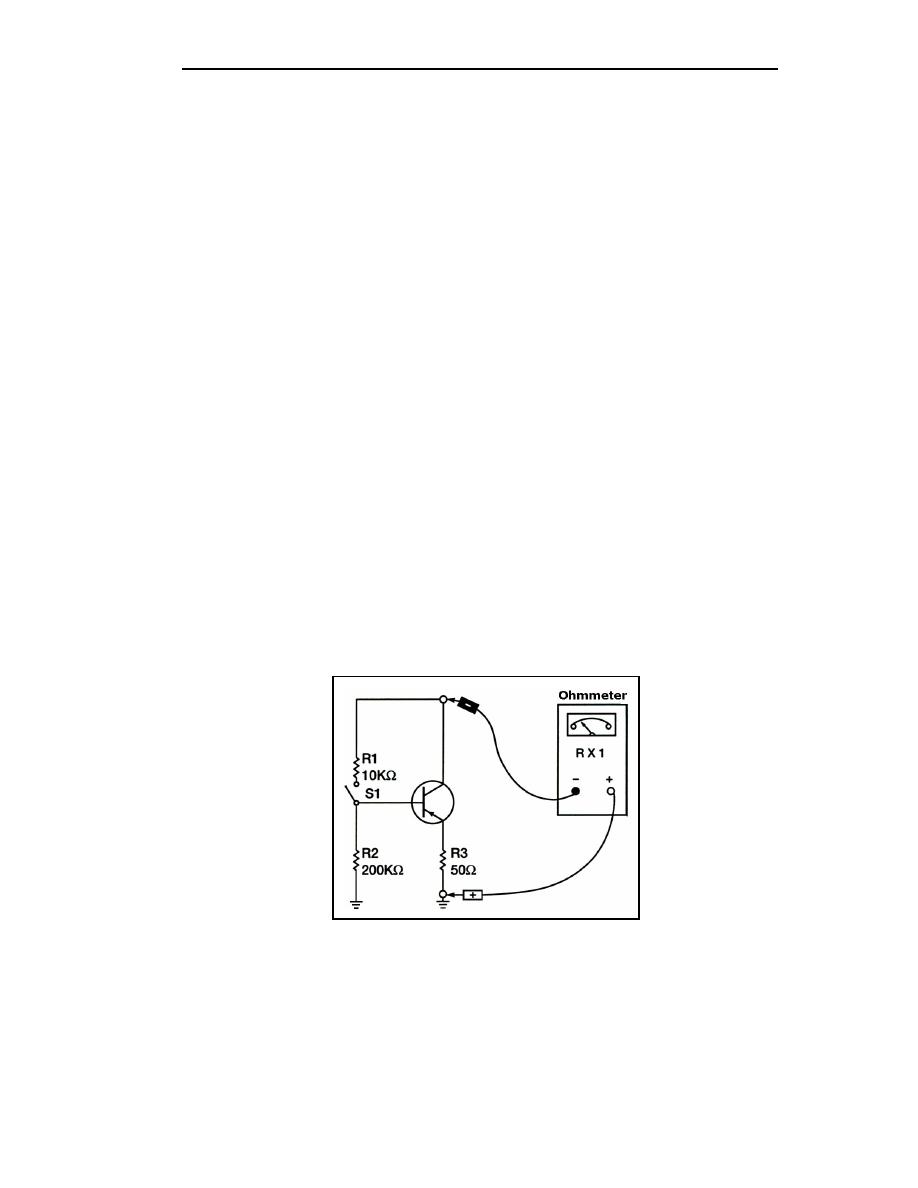
TC 9-62
Transistor testers are nothing more than the solid state equivalent of electron-tube testers
(although they do not operate on the same principle). With most transistor testers, it is
possible to test the transistor in or out of the circuit. It is impossible to cover all the
different types of transistor testers. Since each tester comes with its own operator's manual,
we will discuss the most frequently used tester, the ohmmeter, for testing transistors.
Testing Transistors With an Ohmmeter
2-101. There are four basic tests used for practical troubleshooting of transistors. These
tests check for gain, leakage, breakdown, and switching time. However, for maintenance
and repair, it is usually not necessary to check all of these parameters. A check of two or
three parameters is usually sufficient to determine whether a transistor needs to be
replaced. Two of the most important parameters used for testing are gain and leakage. The
following describes the tests (using the ohmmeter) to check for transistor gain and leakage.
TRANSISTOR GAIN TEST - A basic transistor gain test can be made using an
ohmmeter and a simple test circuit. The test circuit can be made with just a couple of
resistors and a switch (see Figure 2-21). The principle behind the test lies in the fact that
little or no current will flow in a transistor between emitter and collector until the emitter-
base junction is forward biased. The only precaution you should observe is with the
ohmmeter. Any internal battery may be used in the meter provided that it does not exceed
the maximum collector-emitter breakdown voltage. With the switch in the open position
(see Figure 2-21), no voltage is applied to the PNP transistor's base, and the emitter-base
junction is not forward biased. Therefore, the ohmmeter should read a high resistance, as
indicated on the meter. When the switch is closed, the emitter-base circuit is forward
biased by the voltage across R1 and R2. Current now flows in the emitter-collector circuit
that causes a lower resistance reading on the ohmmeter. A 10-to-l resistance ratio in this
test between meter readings indicates a normal gain for an audio-frequency transistor. To
test an NPN transistor using this circuit, simply reverse the ohmmeter leads and carry out
the procedure described earlier.
Figure 2-21. Testing a Transistor's Gain with an Ohmmeter
TRANSISTOR LEAKAGE TEST Use an ohmmeter to test a transistor for leakage (an
undesirable flow of current). Perform this test by measuring the base-emitter, base-
collector, and collector-emitter forward and reverse resistances. For simplicity, consider
the transistor under test in each view of Figure 2-22 as two diodes connected back to back.
Therefore, each diode will have a low-forward resistance and a high-reverse resistance. By
2-30
TC 9-62
23 June 2005


 Previous Page
Previous Page
